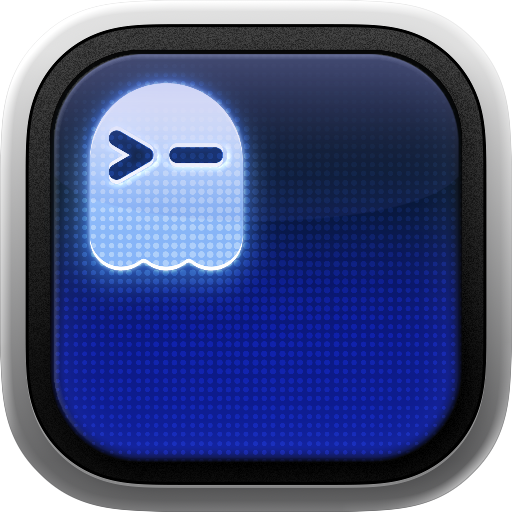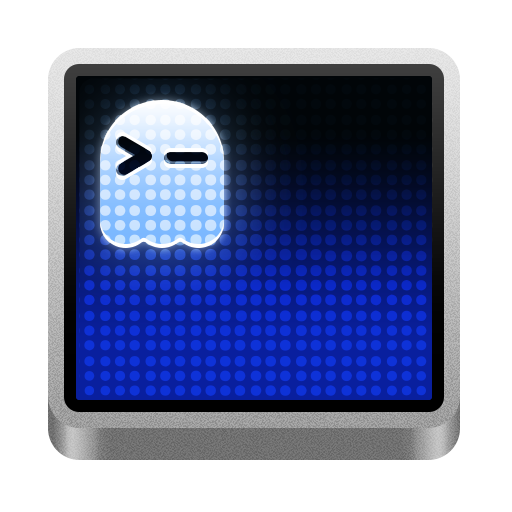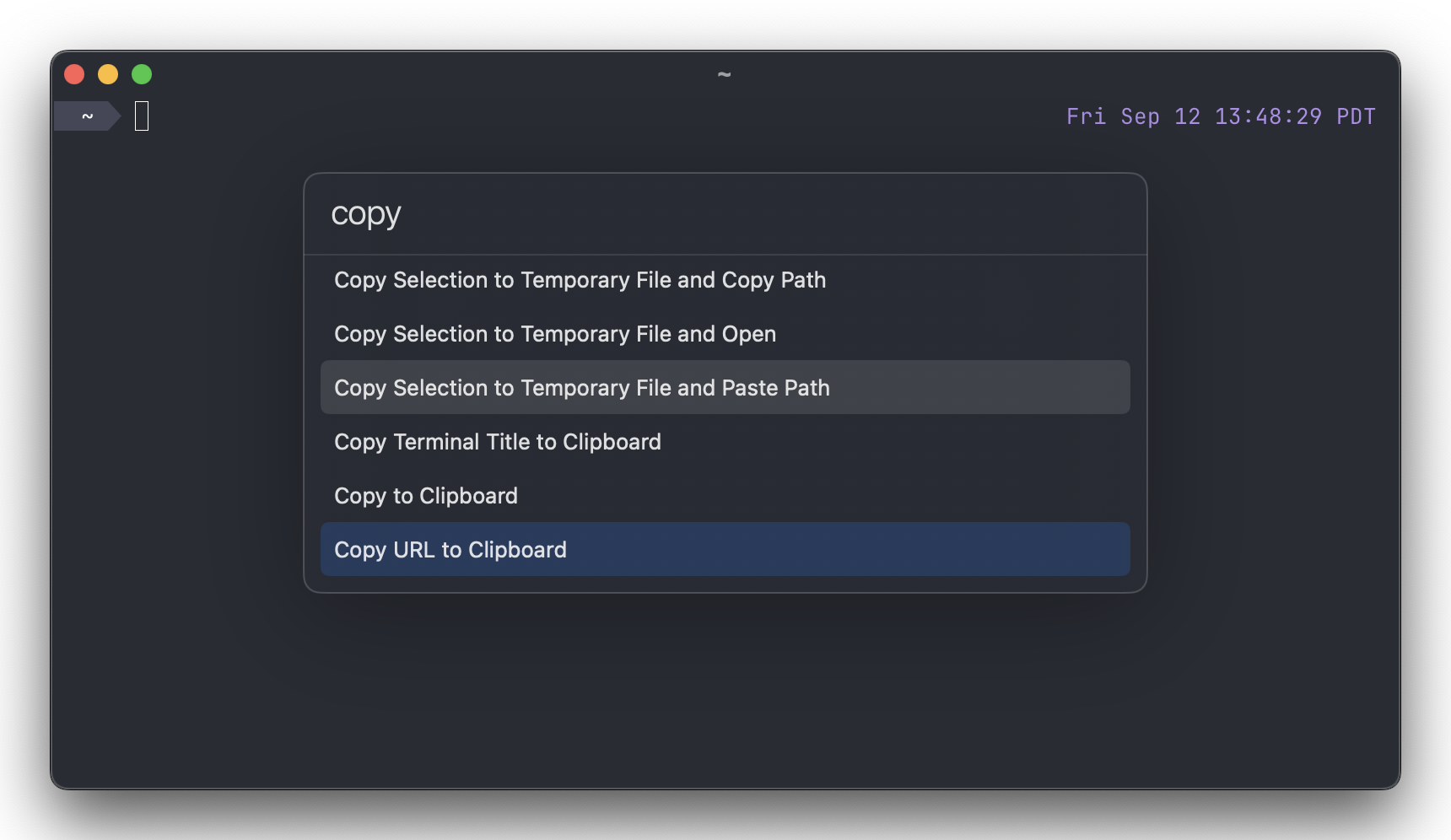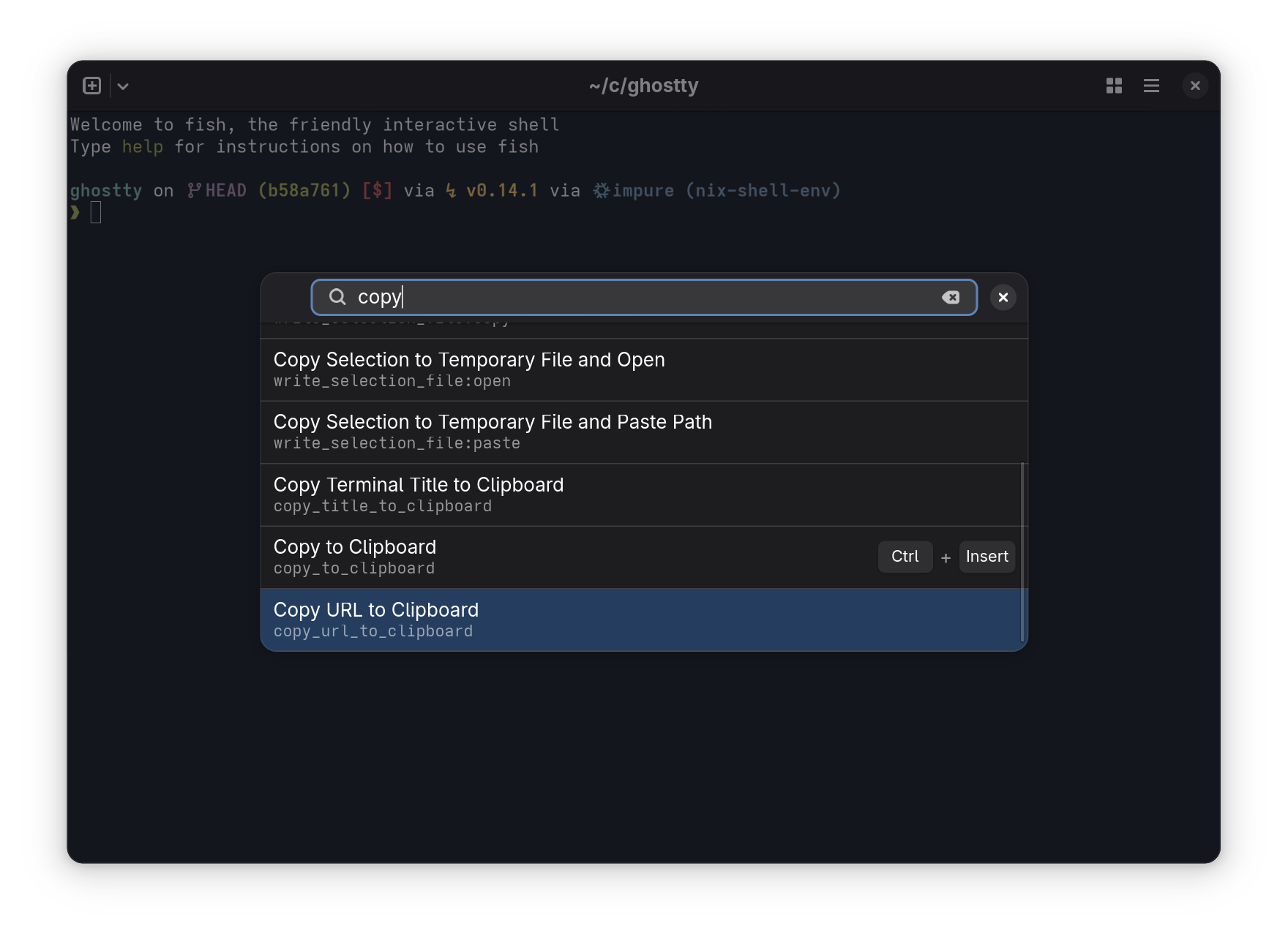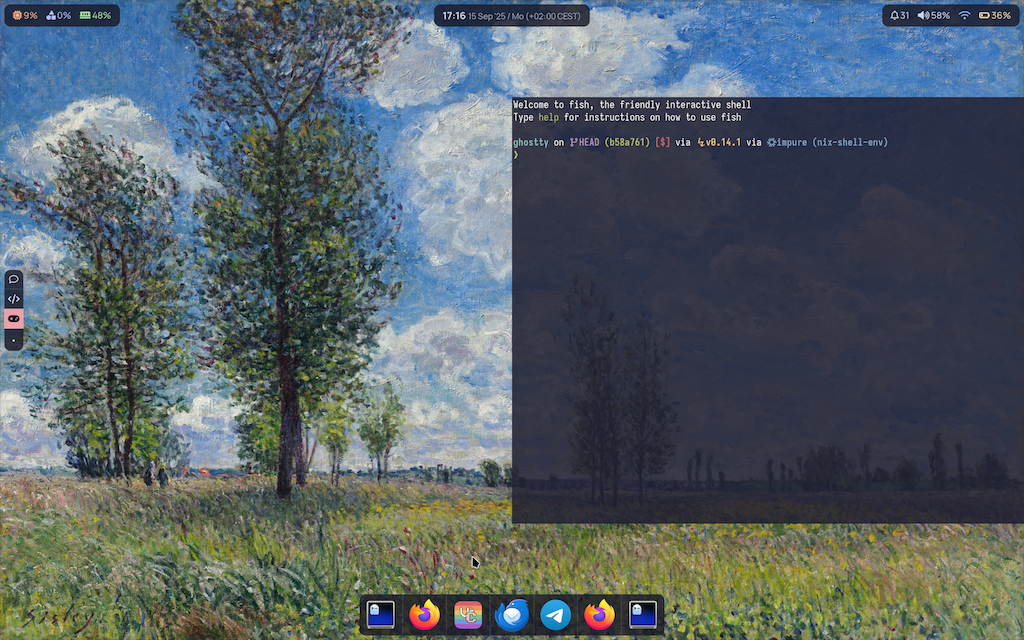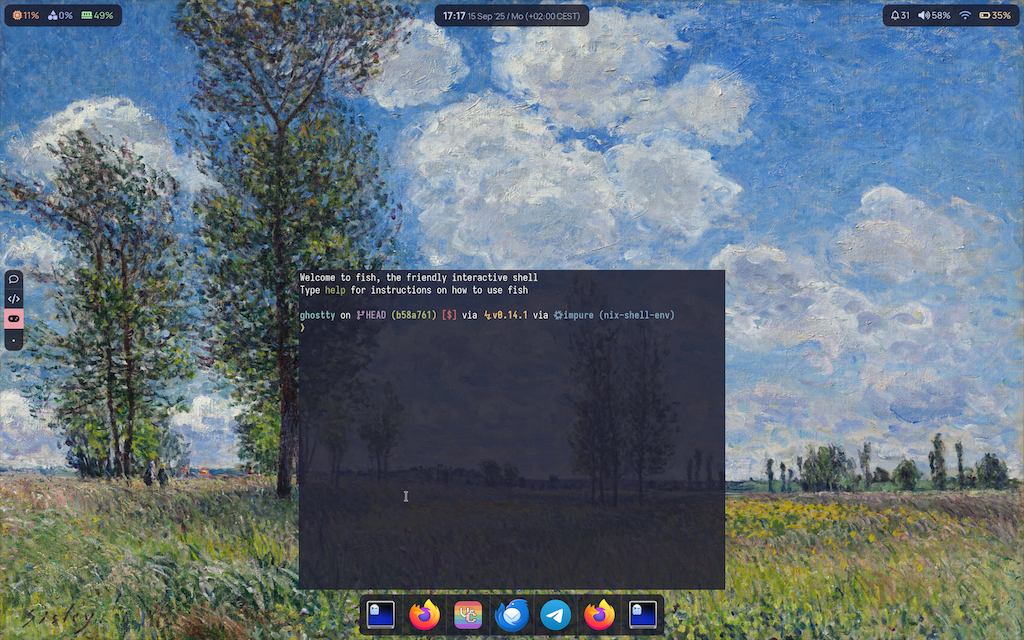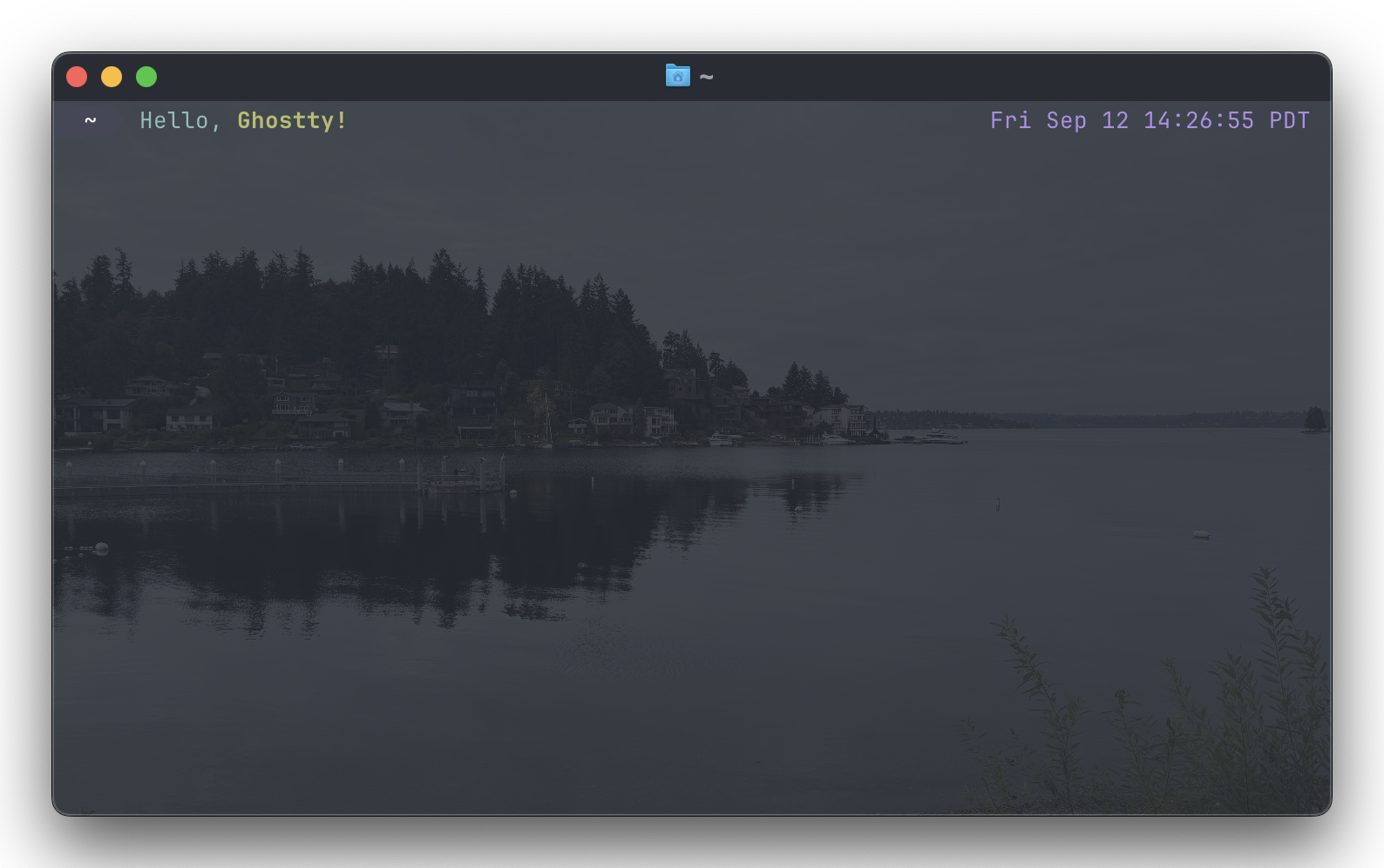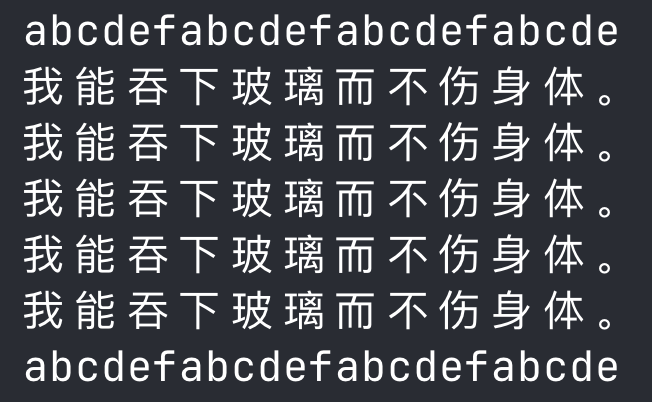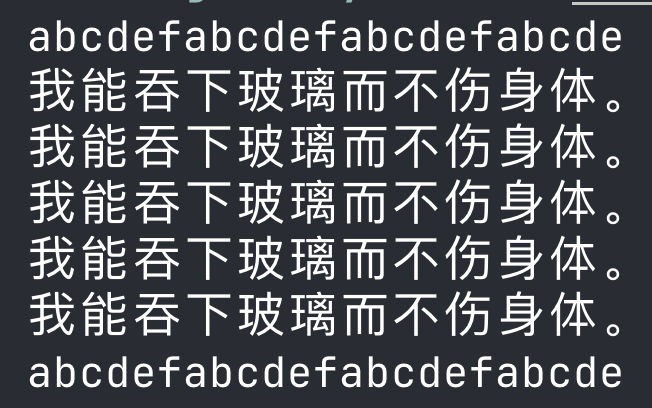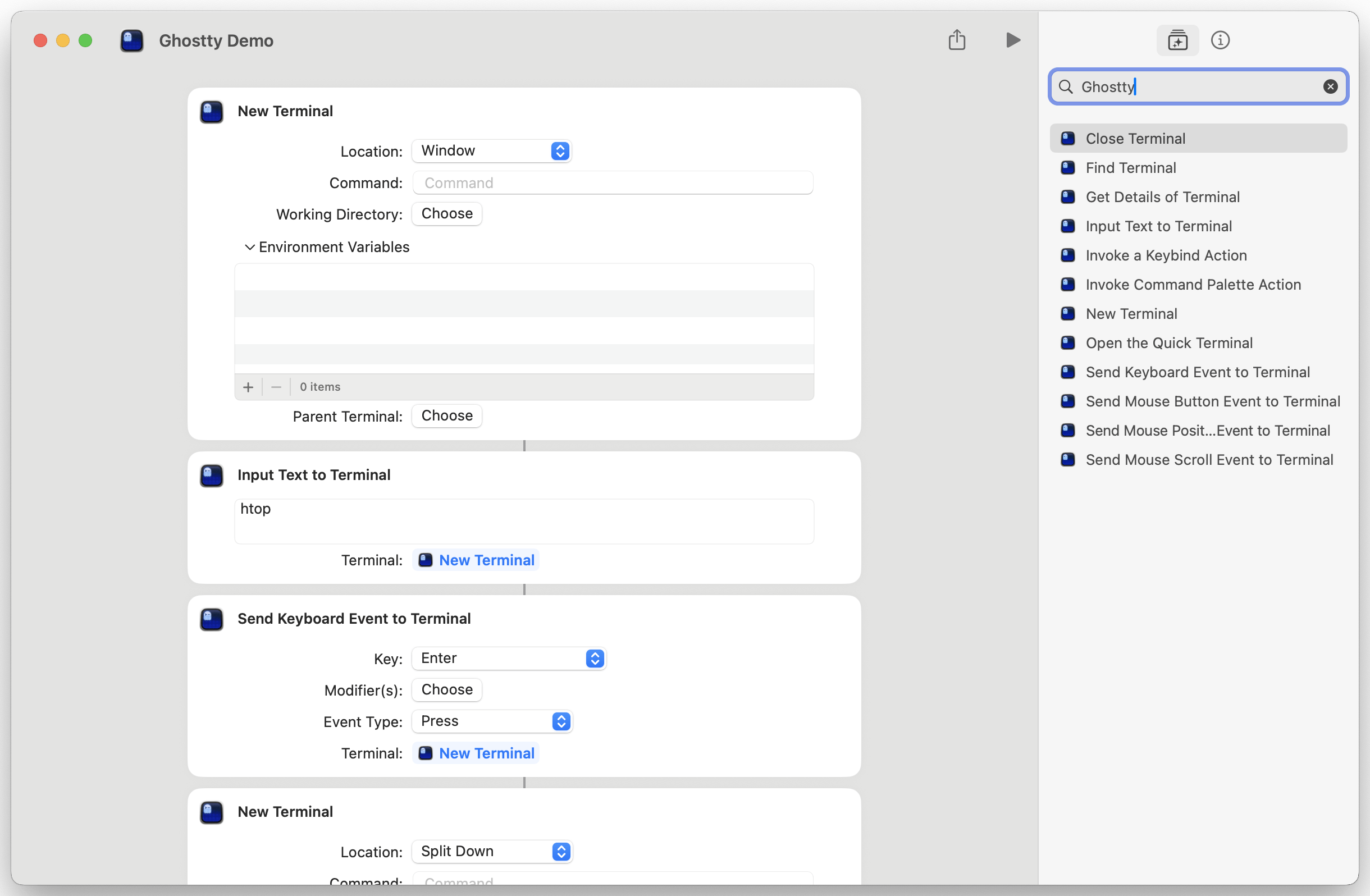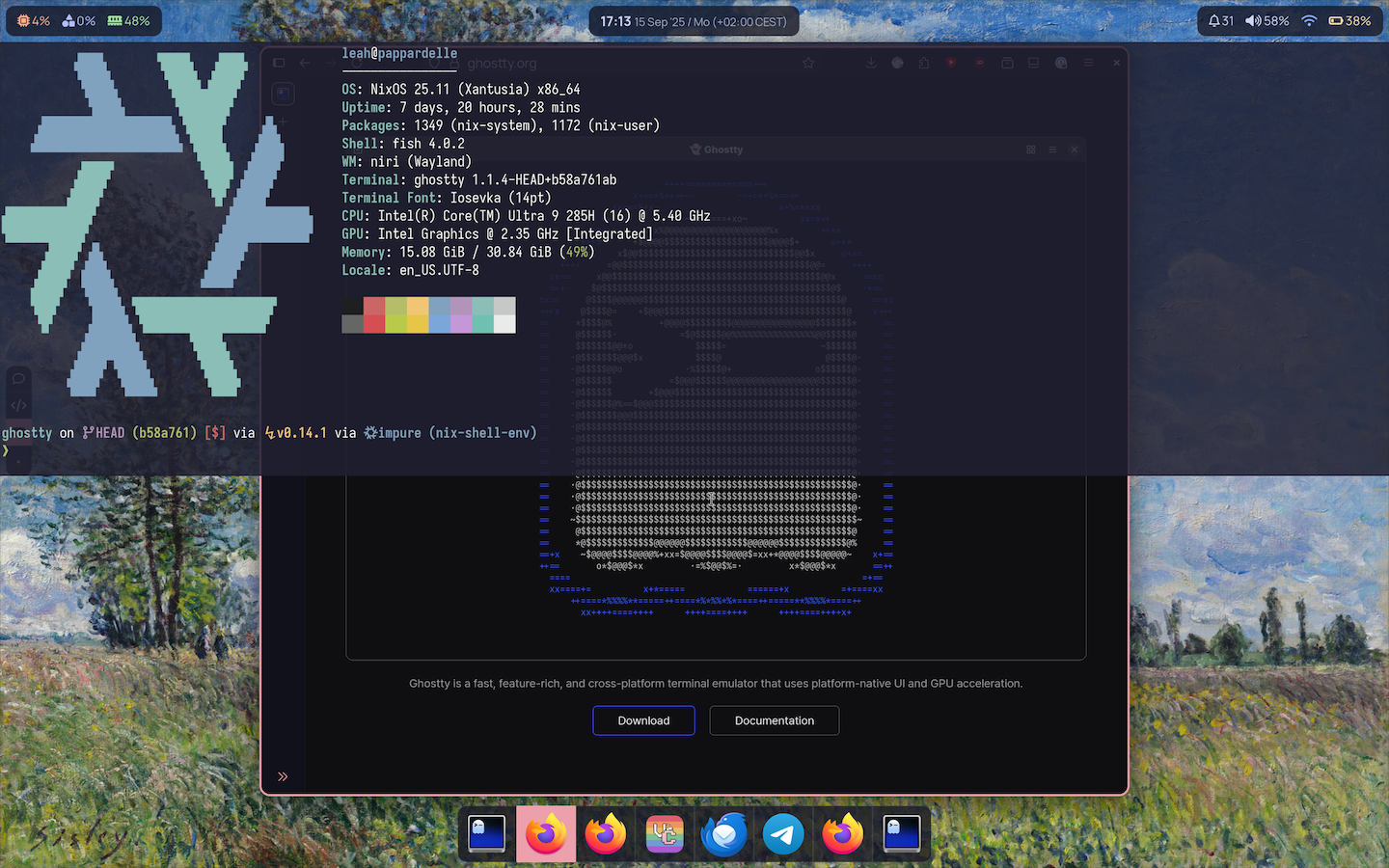Ghostty 1.2.0
Release notes for Ghostty 1.2.0, released on September 15, 2025.
Ghostty 1.2.0 features 6 months of work with changes from 149 contributors over 2,676 commits. Thank you to all the contributors, maintainers, community moderators, translators, packagers, and users who each helped make this release possible. This release contains major improvements to every part of Ghostty, including hundreds of bug fixes.
- macOS: GHSA-q9fg-cpmh-c78x. Fixed an issue where Ghostty can be used as a vector for privilege escalation from other vulnerable or malicious sources. This requires a vulnerable application outside of Ghostty to initiate this chain of events. As such, this is considered a low risk advisory.
On macOS, Ghostty 1.2 ships with a new macOS Tahoe compatible icon shown below. This icon is built with the new Icon Composer application and allows the icon to work with all of the new macOS light, dark, translucent, and custom tinting styles.
On GTK (Linux and FreeBSD), Ghostty 1.2 ships with a new icon that better matches many desktop environments. We chose to align with the GNOME styling since that is common and doesn't generally look out of place in most environments.
Note
It's impossible to make a perfect, globally consistent icon for the Linux and BSD ecosystem due to the diversity of desktop environments. We believe this icon looks better in more environments than the prior icon, and avoids some negative reactions that the prior icon demonstrated a macOS-centric point of view.
Ghostty now has a command palette that can invoke most keybind actions, such as creating new terminals, moving focus, changing text selection, copy and paste, etc.
The command palette is bound by default to ctrl+shift+p on GTK and
cmd+shift+p on macOS. This can be rebound to any keybind using the
toggle_command_palette keybind action. The command palette is also available
via the menubar on both macOS and GTK.
The command palette exposes almost every available keybind. As new keybind actions are added to Ghostty, they will be automatically available in the command palette as well. This has some immediate benefits, namely that you can access keybind actions even if they aren't bound to a keybind. This is useful for infrequently used actions.
For example, I personally find myself using the move_tab action via the
command palette frequently, but not frequently enough to justify binding it.
In future versions of Ghostty, we'll continue to expand the features that are available in the command palette. For example, we're working on a new terminal sequence specification that would allow terminal programs to expose any of their actions directly in the command palette (e.g. imagine Neovim commands being fully available in the command palette).
PRs: #2384
A new configuration quick-terminal-size can now configure the default size
of the quick terminal. This was one of the most highly requested features.
The quick-terminal-size configuration supports both percentage and pixel
size. If you specify only one value, it specifies the size of the primary
axis (depending on the location). If you specify two values, then the second
value is the secondary axis. The example below illustrates:
# Percentage, primary axis only
quick-terminal-size = 25%
# Pixels work too, primary axis only
quick-terminal-size = 600px
# Two values specify primary and secondary axis
quick-terminal-size = 25%,75%
# You can also mix units
quick-terminal-size = 300px,80%
The primary axis is defined by the quick-terminal-position configuration.
For the top and bottom values, the primary axis is the height. For
the left and right values, the primary axis is the width. For center,
it depends on your monitor orientation: it is height for landscape and width for
portrait.
Beyond simply specifying the size, the quick terminal is now resizable at runtime and will remember that size for the duration that Ghostty is running. In prior versions, the size was fixed, which caused real problems depending on monitor size and resolution.
Screenshots with a couple examples on GTK are shown below:
PR: #7608
Ghostty now has opt-in shell integration features to make Ghostty more compatible with SSH for remote machines that haven't updated to support Ghostty's terminfo.
The new ssh-env opt-in feature will automatically set the TERM variable
to xterm-256color for SSH sessions (as well as forward some other
environment variables to make sessions work better). While not strictly correct,
this band-aid solution helps more than it hurts in most cases.
The new ssh-terminfo opt-in feature will automatically copy the Ghostty
terminfo to the remote machine so that the proper xterm-ghostty TERM
setting can be used and remote programs can take full advantage of all of
Ghostty's features (and avoid xterm features we don't support).
Both of these features are opt-in because they require overriding the ssh
command in your shell. This operation is not without risk, so we want to make
sure users are aware of what they're doing. We do our best to make this
stable and reliable, but there are edge cases we can't account for. As such,
this is still a work-in-progress and we welcome feedback.
PRs: #7620
The renderer backends have been reworked so that the core logic is shared, whether rendering with OpenGL or Metal. This change will allow for quicker improvements to that area of the code in the future, and will also help to ensure feature parity between the two backends, which is something that was starting to become an issue as many features were implemented for Metal but not for OpenGL.
In the process of this rework, several improvements were made for the OpenGL backend, which should now be more efficient and has near feature parity with the Metal backend.
This means that Linux users will now see proper linear alpha blending, which
removes artifacts seen around the edges of text with certain combinations of
background and foreground color. The default alpha-blending configuration
value on Linux is now linear-corrected, which performs linear blending with
a correction step for text so that the apparent weight matches the non-linear
blending that people are used to.
This rework also made it so that custom shaders can now be hot reloaded.
PRs: #7648
Custom shaders are now provided information about the terminal cursor, so that custom effects and animations can be applied to it, like a trail or smear.
The example below shows a "cursor blaze" shader that leaves a trail behind the cursor as it moves:
Cursor shaders and custom shaders in general are not for everyone, but we've seen some incredibly creative shaders from the community. A lot of people are having a lot of fun, and beyond simple eye candy they can be practically useful too, such as making the cursor easier to follow as it moves (but perhaps less loudly).
We do eventually plan to add a first-party animated cursor, so that users don't need to take on the additional performance cost of a custom shader just to have a cursor that's easier to follow as it moves, but adding this feature to custom shaders was an easy stop-gap measure. Plus, this will still be useful even after we add the first-party animated cursors, since some users may still want to have very specific custom effects that aren't possible through the built-in option.
PRs: #3645
You can now specify a background image for your terminal using the
background-image configuration. This comes with a set of other
configurations so that the image appears just how you'd like it:
background-image-opacity, background-image-position,
background-image-fit, and background-image-repeat.
Warning
In Ghostty 1.2.0, the background image is duplicated in VRAM for each terminal. For sufficiently large images and many terminals, this can lead to a large increase in memory usage (specifically VRAM). A future Ghostty release will share image textures across terminals to avoid this issue.
Ghostty now recognizes the ConEmu OSC 9;4 sequences
and renders a GUI native progress bar.
As far as we know, we believe Ghostty is the first terminal emulator on macOS to support this feature. Multiple terminals other than Ghostty on both Linux and Windows already support this feature.
Progress bars can show success/error states, numerical progress towards completion, indeterminate progress (pulsing), and more. Programs like Amp are already utilizing the progress bar today to show activity, as shown below:
Graphical progress bars are now supported by multiple terminals across Windows, Linux, and macOS as well as a handful of major terminal programs such as the systemd and Zig CLIs. We hope, given the growing terminal support, that more programs will start using this feature.
Today, Ghostty shows a simple, basic progress bar at the top of the terminal. In future versions, we will expand progress so it is shown in tab headers, task bars, dock icons, etc.
Note
The progress report
OSC 9;4sequence collides with the iTerm2 notification sequence. Ghostty is the only emulator to support both sequences. To handle this,OSC 9;4always parses as a progress report, meaning you can't send any notifications starting with;4as notifications. We think this is a reasonable trade-off given the extremely specific text and the wider support for the more recommendedOSC 777notification sequence.
When the font(s) you configured for Ghostty don't have a glyph for a character
we need to render, we find a font on the system that does. These fonts are now
adjusted in size to better match the primary font. This is similar (but
not identical) to font-size-adjust in CSS.
This helps account for the differing sizes of fonts, and creates a generally more consistent appearance. This is also helpful for users who use multiple writing systems; for example, CJK (Chinese, Japanese, and Korean) text now avoids having large vertical "gutters" between characters.
| Ghostty 1.1.3 (Old) | Ghostty 1.2.0 (New) |
|---|---|
|
|
The example above is a subtle difference. The difference is more apparent when many differing font faces get used in a single line. To ensure we were on the right path, we also polled a number of Chinese readers within the community and feedback leaned strongly positive towards the new behavior.
In the future, we plan to rework font configuration so that you can specify sizes per-font, or let a configured font be sized automatically like fallback fonts are.
A variety of new characters are now drawn directly by Ghostty instead of having to rely on a font for them. We draw glyphs directly so that we can ensure they align correctly with the cell and each other.
An example of just a fraction of the newly supported glyphs is shown below. Notice how the glyphs align perfectly with each other along the cell edges with no gaps in between. This kind of pixel-perfect rendering is very important for TUI applications that use glyphs such as these for UI elements.
| Ghostty 1.1.3 (Old) | Ghostty 1.2.0 (New) |
|---|---|
|
|
PRs: #7809 , and subsequent PRs to fix minor issues
The built-in Nerd Font symbols are now provided by a standalone symbols-only font, rather than using patched versions of JetBrains Mono in Regular, Bold, Italic, and Bold Italic styles, and the built-in JetBrains Mono now uses a variable font rather than 4 static ones. This makes it so that the embedded fonts in Ghostty take significantly less space than they used to.
This also means we're now using a more up-to-date copy of the Nerd Fonts symbols, so newer symbols will now render correctly.
The big change, however, is that Ghostty now automatically resizes Nerd Fonts symbols to match the cell size, in the same way that the official Nerd Fonts patcher does, which means that the experience of using Ghostty with a normal un-patched font should be nearly or completely identical to using it with a patched font before.
This means that there is now no reason to use patched fonts in Ghostty, since things like powerline glyphs will always be scaled appropriately for the cell size either way.
PR: #7320
We've reworked our keybindings to be more consistent, based on the W3C key event code specification. This work should result in more predictable, working keybindings across operating systems and keyboard layouts, but also brings with it some major behavior changes that may break existing keybindings.
All single codepoint characters now match the character produced by the
keyboard layout (i.e. are layout-dependent). So ctrl+c matches the
physical "c" key on a US standard keyboard with a US layout, but matches
the "i" key on a Dvorak layout. This also works for international characters.
Codepoints are case-insensitive and match via Unicode case folding (this is
how both Windows and macOS treat keyboard shortcuts).
All other key names match physical keys, and the key names are named
according to the W3C key codes. Example: ctrl+KeyA will always match the "a"
key on a US physical layout (the name KeyA lining up with US keyboards is
mandated by the spec, not us). Note when we say "physical" here we mean the
keycode sent by the OS or GUI framework; these can often be overridden
using programs to remap keys at the "hardware" level but software layouts
do not do this.
As a result of the above, the physical: prefix has been removed.
Physical keybinds are now explicit through the use of multi-codepoint key
names as noted above. Previous physical: keybinds continue to work but
should be updated to the new format.
For backwards compatibility, all existing key names in Ghostty that didn't
match W3C map to their W3C equivalent. For example, grave_accent maps to
backquote.
PRs: #7099 , #5326 , #7087 , #7101 , #7118 , #7148 , #7842 , #7533
Ghostty on both macOS and GTK support the terminal bell (ASCII BEL or
0x07). Ghostty's behavior when the bell is rung can be customized using
the bell-features configuration. We've shipped with defaults which we believe
are the least intrusive while still being useful, and more intrusive optional
features can be set with bell-features.
On macOS, the bell by default will put the bell emoji (🔔) in the title of the terminal, will bounce the dock icon once, and will put a badge on the Ghostty icon visible in the dock and application switcher. No audio will be played.
On GTK, the bell by default will put the bell emoji (🔔) in the title of the terminal and will mark the window as requesting attention. The exact behavior of "requesting attention" is determined by the window manager or desktop environment. No audio will be played.
GTK also supports an audio bell feature which is off by default. This can be
enabled with bell-features=audio. You can even specify custom audio to
play using the bell-audio-path configuration. The bell-features=system
feature (default off) will use the "system beep" which usually can be audio
as well, configured via a central system setting.
GTK also supports a border flashing animation that can be enabled with
bell-features=border. This is similar to the "visual bell" feature provided
by other terminal emulators.
A future version of Ghostty will bring parity to macOS with all the bell features.
Ghostty 1.2 includes dozens of improvements to core terminal emulation to ensure terminal programs work consistently and correctly in Ghostty as they do in other terminal emulators. You can find the full list of related changes in the terminal capabilities section.
The improvements range from very minor (#7443 , a sequence not used by any known program in the wild) to very important (#8590 , which broke some real programs). In any case, Ghostty takes terminal emulation compatibility very seriously and we work hard to ensure that Ghostty can support the wide spectrum of terminal features that exist.
Getting this right is easier said than done: a very small subset of terminal emulation functionality is formally specified, with the vast majority being defined by de facto standards based on how terminal emulators behave. Additionally, since no singular standards body exists, protocols often conflict with each other and we're left determining which protocol is more important or how we can compromise to support both.
For example, the progress bars sequence collides with the iTerm2 desktop notification sequence. As a compromise, any unambiguous progress bar sequence takes priority over notifications, so if you wanted to send a notification that exactly said the sequence to set a progress bar, it will not work. This is a compromise Ghostty made so that we can be one of the only terminals to support both progress bars and iTerm2 desktop notifications.1
Ghostty 1.2 adds support for macOS 26 (Tahoe).
When running on macOS 26, Ghostty will use the new Liquid Glass style. The app icon has been updated to support macOS 26 features such as light, dark, tinting, etc. A number of UI details have been updated to better match the new macOS style, such as icons in menu bars. In addition to visual support, a number of compatibility issues were also fixed.
Ghostty 1.2 remains fully compatible with prior macOS versions back to and including macOS 13 (Ventura).
Note
Ghostty 1.1.x is functional on macOS 26. Due to the way macOS SDKs work, Ghostty 1.1.x will use the old pre-Tahoe UI styling. There are still some compatibility issues, but it is largely functional if you are unable to upgrade to Ghostty 1.2 in the near term.
PRs: #7535
All operations that close a terminal now support undo and redo using
standard macOS keybinds (Cmd+Z and Cmd+Shift+Z, but can be rebound).
This includes closing a split, closing a tab, closing a window, closing
all windows, closing other tabs, etc.
Undo/redo works by keeping recently closed terminals running but hidden for a configurable amount of time (by default 5 seconds). During this time, you can undo the close and the terminal will be reopened in the same location as before. Since the terminal was always running, your exact terminal state is restored.
The time that a terminal can be undone can be configured with the
undo-timeout configuration.
In future versions of Ghostty we plan to expand the GUI interactions that can be undone and redone, such as resizing splits, moving tabs, etc.
PR: #7634
Ghostty on macOS now integrates with Apple Shortcuts. This enables a Ghostty to be scripted on macOS, especially when combined with non-Ghostty-specific shortcut actions like taking screenshots, moving windows, etc.
Apple Shortcuts can be bound to global shortcuts, synced across devices, and more. It is a really powerful tool!
This feature doesn't replace our future plans for a full cross-platform Ghostty API. This macOS-specific feature does address many of those use cases for macOS users, but we still plan to build alternate scripting choices in the future.
PRs: #4624
The quick terminal is now supported on Linux while running on Wayland
with access to the
widely supported wlr-layer-shell protocol.
The quick terminal has been available on macOS since Ghostty 1.0.
As a reminder, the "quick terminal" is the feature of Ghostty where a
singleton window of a terminal can be shown and hidden with a single
hotkey bound to toggle_quick_terminal (usually a global hotkey that
works even when Ghostty isn't focused). This is sometimes referred to
as a "dropdown terminal" or a "DOOM-style terminal."
The quick terminal on Linux fully supports tabs and splits.
PRs: #6051
The GTK application now supports global keybinds, keybinds that
work even while Ghostty is not the focused application. These keybinds
are defined with the global: prefix in the Ghostty configuration.
Global keybinds require a functional XDG desktop portal installed on your system. Other parts of Ghostty already rely on XDG desktop portal, so it likely already exists. If not, it's usually a single well-supported package away (plus a restart).
Global keybinds support any keybind action but are particularly well
suited when paired with features such as toggle_quick_terminal, which is
now also supported on GTK.
PRs: #6004 plus too many to list for each locale.
Preliminary support for localization of the GTK application has been added. Currently, only GTK GUI elements are translated. Localization support for macOS and other parts of Ghostty will arrive in future releases.
Ghostty 1.2 has complete localization for GUI elements for the following locales:
- bg_BG
- ca_ES
- de_DE
- es_AR
- es_BO
- fr_FR
- ga_IE
- he_IL
- hu_HU
- id_ID
- it_IT
- ja_JP
- ko_KR
- mk_MK
- nb_NO
- nl_NL
- pl_PL
- pt_BR
- ru_RU
- tr_TR
- uk_UA
- zh_CN
Localization is done by volunteers for each locale. The Ghostty project
is extremely grateful to the volunteers who have contributed their time
to localize Ghostty. If you would like to localize Ghostty to your locale,
please see the CONTRIBUTING.md documentation for instructions.
PRs: #7606
The Ghostty GTK application now supports FreeBSD. This work was driven almost completely by a single community member, who did the hard work of submitting patches to all our dependencies to support FreeBSD, updating our build scripts, and assisting with automated testing to ensure Ghostty remains functional on FreeBSD.
In addition to building and running properly on FreeBSD, the community is developing a FreeBSD port to make installation easier. We will update the installation documentation when that port is available.
PRs: #7961 , gtk-ng PRs
We've rewritten the entire GTK application from the ground up using the full GObject type system. Throughout the process, we tested every feature with Valgrind to check for memory leaks, undefined memory access, use-after-free, and more.
See the original PR for full motivations, but the result is a more stable, modern GTK application that is much more maintainable for contributors.
The GTK application in 1.1.3 had some known memory leaks that required Ghostty to be restarted after very extended periods of time. Terminals are usually never closed for many developers and no application should require restarts. The GTK application now is completely stable and tip users have reported no issues keeping it running for weeks at a time.
This doesn't just benefit GTK users: as a result of this work, we now run all Ghostty unit tests under Valgrind for every commit (#8309 ). Over 90% of our unit tests cover cross-platform code, so this helps ensure that all of Ghostty is more stable and reliable.
Note
Valgrind is only able to detect memory issues in executed code paths. We exercised every possible GUI interaction, but we didn't exercise every possible code path in Ghostty.
macOS: The minimum required macOS version for Ghostty 1.2 remains unchanged (macOS 13 Ventura). Ghostty is now compatible with macOS 26 (Tahoe).
GTK: Ghostty 1.2 requires GTK 4.14 and libadwaita 1.5. This aligns with our GTK/Adwaita version policy. Systems with older GTK or Adwaita versions can workaround this requirement by using an older version of Ghostty or a community-maintained snap or flatpak package.
- GTK: libadwaita is now required. We've warned that this was coming since the 1.1.0 release notes and our motivations are well explained in the prior link. Please read that carefully before reacting! We put out a call for feedback from the community and discussed this decision at length. We shipped features addressing those concerns such as our SSD support, first class CSS styling, and more.
- GTK: The minimum required OpenGL version is now 4.3. This was required to improve performance, fix some rendering bugs more easily, and make our OpenGL backend more maintainable. OpenGL 4.3 was released in 2012, so this is still over a decade old. #7620
- Bundled themes have been updated to release-20250915-154825-b4500fc. Since the themes are managed upstream, this may include theme renames and color changes. If your theme that was working in 1.1.3 stops working when updating to 1.2, please check the linked release to verify your theme name.
- The
dligfont feature is now disabled by default. This may result in ligatures that were previously working to no longer work. This was always formally specified as a "discretionary ligature" feature, meaning that it should be opt-in. The more commoncalt(contextual ligature) feature remains on by default. You can re-enable this feature with thefont-featuresconfig. #8164
The list below contains deprecations that remain compatible today through a compatibility layer, but may break in a future release if they are ignored:
adw-toolbar-stylehas been renamed togtk-toolbar-style.gtk-tabs-location=hiddenis replaced withwindow-show-tab-bar=never.selection-invert-fg-bgis replaced withselection-foreground=cell-backgroundandselection-background=cell-foreground. #5219cursor-invert-fg-bgis replaced withcursor-color=cell-foregroundandcursor-text=cell-background. #5219
There is no set timeline to remove these deprecations, but we recommend adapting to the new configurations sooner rather than later to avoid any possible disruptions in the future.
Note
The deprecations above will continue to work without any visible warnings. We plan to augment our GUI to show warnings about the configuration in a future release.
Full list of closed issues on GitHub.
In each section, we try to sort improvements before bug fixes.
- Commands through
-eno longer are run wrapped with/bin/shand instead are executed directly. #7032 - Add a new command palette feature to macOS and GTK that allows executing most keybind actions even if they aren't bound. #7153 #7156
- Directional
goto_spliton both macOS and GTK navigates to the nearest split in that direction from the top-left corner of the current split. We call this "spatial navigation" and it results in more intuitive split navigation. #574 - The
equalize_splitskeybind action now produces more expected, pleasing results when multiple splits are oriented in the same direction. #7710 - New opt-in shell integration features
ssh-terminfoandssh-envimprove the experience of using Ghostty over SSH. #7608 - Cursor information is now available to custom shaders, enabling custom shaders to do things such as draw cool animations for cursor movement. #7648
- A new CLI command
+edit-configwill open the Ghostty configuration in your configured terminal$EDITOR. #7668 - Add a new keybind
prompt_surface_titlethat can be used to change the title of a terminal manually. #2509 #5769 - Add a new keybind
scroll_to_selectionwhich scrolls the viewport to the top-left of the current selection, if it exists. #7265 - Add a new keybind
set_font_sizeto set the font size. #7795 - Add a new keybind
copy_title_to_clipboardthat copies the current terminal title to the clipboard. #7829 - Add a new keybind
close_tabs:otherthat closes all tabs except the current one. #8363 - The keybinds
write_screen_file,write_scrollback_file, andwrite_selection_filenow supportcopyas a value to copy the file path to the clipboard. #7721 - config
app-notificationshas a new valueconfig-reload(default on) to control whether a notification is shown when the config is reloaded. #8366 - config:
commandvalue can be prefixed withshell:ordirect:to execute a command via the shell (default) or directly viaexec. #7032 - config: copy on right click with
right-click-action = copy. #4404 - config:
background-imagecan be used to set a background image for the terminal. This currently applies to each terminal, not to windows. #3645 - config:
envcan be used to specify environment variables to set in the terminal environment. #5257 - config:
quick-terminal-sizecan be used to customize the size of the quick terminal. #2384 - config:
font-shaping-breakconfigures when a ligature should be broken (split). #4515 - config: new values
cell-foregroundandcell-backgroundcan be used withselection-foreground,selection-background, andcursor-colorto set their color values to the dynamic cell colors. #5219 - config: new
bold-coloroption to specify a custom color for bold to make it easier to read. #7168 - config: new
selection-clear-on-typingoption to clear selection when typing. #7394 - config: new
link-previewsoption determines when URL previews in the bottom of windows appear. #7831 - config: new
background-opacity-cellsapplies thebackground-opacityconfiguration to explicit cell backgrounds (e.g. from the running program). #7913 - config: new
faint-opacityconfigures the cell opacity to use for cells marked as faint by the terminal program. #8472 - config: new
right-click-actionoption can configure the behavior when the right mouse button is clicked. #8254 - cli: pressing
enterin+list-themesnow shows help text on how to configure the theme. #4731 - cli:
+list-themesnow has a flag to filter light and dark themes. #7235 - cli: add theme filtering to
+list-themes. #8082 - cli:
+list-colorsshows the colors in addition to their hex code. #8393 - custom shaders can now be reloaded at runtime. #7620
- custom shaders blend properly with the background color. #7620
- holding the mouse above or below the window while clicking now scrolls the viewport without having to jiggle the mouse. #4422
- shell-integration: now uses a single
GHOSTTY_SHELL_INTEGRATION_FEATURESenv var to specify enabled features instead of multiple env vars. #6871 - shell-integration/elvish: use the
kitty-shell-cwd://scheme for OSC 7 reporting so we don't have to encode it. #7033 - Split and tab navigation keybinds such as
goto_splitandnext_tabsupportperformable. #7680 - font: improve the performance of glyph hashing for caching yielding a roughly 5% speed in synthetic stress tests. #7677
- fix crash that could happen with certain
font-familyflags provided specifically to the CLI. #7481 - The config
adjust-cursor-thicknessnow works withcursor-style=underline. #7732 - Resolve issue when pressing
backspacewith preedit text (such as when using an IME). #5728 - config:
keybind=(blank) restores default keybindings, behaving like other<key>=blank values. #5936 - config:
paletteconfiguration now supports whitespace between the palette number and color. #5921 - config: All configurations that take a list of colors (e.g.
macos-icon-ghost-color) support spaces after commas. #5918 - the
copy_url_to_clipboardkeybind action works properly with OSC 8 hyperlinks. #7499 - font: fallback fonts sizes are automatically adjusted to more closely match the primary font size visually. #7840
- font: Support new sprites: U+1CC00 to U+1CCFF, U+1CE00 to U+1CEFF, U+2500 to U+25FF, U+1CE00 to U+1CEFF, U+1FB00 to U+1FBFF. #7755 #7761
- font: U+25E4 and U+25E2 (geometric shapes) are now rasterized with the built-in sprite font. #3344
- font: corner pieces of Geometric Shapes are now rasterized with the built-in sprite font. #7562
- font: glyph constraint logic dramatically improved, resulting in things like Nerd Font icons appearing more correctly. #7809
- input: for keyboards that support it, the
copyandpastephysical keys now bind by default tocopy_to_clipboardandpaste_from_clipboard, respectively. #8586 - input: the default
copy_to_clipboardbindings are marked as performable, meaning the key will be encoded to the pty if there is no text to copy. This allows TUIs to capture this. #8504 - input: mouse scrollwheel mapping to mouse events was modified to better match other terminal emulators. #6052
- input:
ctrl+<ASCII>works across a wider variety of keyboard layouts. #7309 - input: mouse dragging while clicking cancels any mouse link actions. #7080
- input: the
goto_tabbinding now binds by default to both the physical and logical numeric keys to work with more keyboard layouts. #8486 - renderer: micro-optimization to improve cached glyph lookup performance #8536 .
- gracefully handle the case that the
execsyscall fails when starting the terminal command. #7793 - The "failed to launch process" error message can no longer be dismissed by pressing a modifier key. #7794
- fix rendering issues when rectangular selection with top-left or bottom-right outside of the viewport. #7692
- fix some rounding errors for octant rendering which caused octants to not line up in some scenarios. #7479
- fix some mouse selection logic which sometimes caused Ghostty to incorrectly select an extra line or character. #7444
- fix file path regular expression to require at least one slash. #7355
- fix a crash when reflowing a grapheme with a spacer head in a specific location. #7537
- Images rendered using the Kitty image protocol now use correct gamma blending. #7368
- Fix scenario where renderer could crash when zooming out if the viewport pointer when out of bounds. #7899
- Fix a crash that could happen if a memory page ran out of space for hyperlinks. #8009
- Fix undefined memory access on first frame render. #7982
- Fix memory leak each time the modifier was held to search for links. #7998
- Fix crashes when our bitmap allocator had exactly 64 chunks allocated. #8276
- Fix possible use-after-free in font atlas error paths. There are no known cases of this being exercised in the wild. #8249
- Fix possible crashes in some internal OOM conditions where growing the backing buffer was not implemented properly. #8277
- Fix undefined memory access in OSC parser that could lead to crashes. #8307
- Fix issues with Kitty image z-indexing. #7671
- shell-integration/bash: no longer depends on a valid
GHOSTTY_RESOURCES_DIRenv var. #7611 - shell-integration/bash: fix a scenario where garbage characters could be printed. #7802
- shell-integration/bash: preserve existing env more reliably. #7908
- Do not resolve symbolic links in OSC 7 path reporting. #7773
- Bundled themes updated to release-20250915-154825-b4500fc. This may rename existing themes. If your theme stops working, please check to see if the theme was renamed. The renames are done upstream so there isn't any way for us to avoid them.
- inspector: fix display of fractional pixel sizes. #8179
- contrib/vim: fix syntax highlighting of the config in scratch buffers. #7119
This section covers the changes to terminal emulation and other capabilities exposed to applications running inside the terminal.
Ghostty remains focused on terminal emulator compatibility so the changes in Ghostty 1.2 only add or improve compatibility with features in other terminal emulators. In future versions of Ghostty, we plan to add new Ghostty-specific features that application developers can take advantage of.
- vt: add support for mode 47. #7443
- vt: add support for mode 1048. #7473
- vt: parse more ConEmu OSC 9 sequences. The only ConEmu OSC 9 sequence that
Ghostty reacts to is the
9;4progress bar sequence. The remainder are parsed but ignored. #8410 - vt: Significant improvements in feature support and compatibility of color operations with xterm. Specifically OSC 4, 5, 10-19, 104, 105, and 110-119. This adds new sequence support in addition to fixing compatibility of previously supported color operations. #8590
- vt: Indicate support for OSC 52 in the primary DA report. #7725
- vt: OSC 4/104 allow multiple color specifications. #7402
- vt: Allow SGR sequences to contain up to 24 parameters, fixing some Kakoune themes. #8417
- vt: OSC 52 can empty the current clipboard by sending an empty string. #8018
- vt:
XTGETTCAPworks properly for lowercase hex characters. #7229 - vt: Kitty image protocol supports delete by range operations. #5957
- vt: Fix aspect ratio issues with some images using the Kitty image protocol. #6673
- vt: Kitty image protocol should accept commands with no control data. #7023
- vt: don't force Kitty images to a grid size. #7367
- vt: fix a variety of alt screen edge cases for mode 47, 1047, and 1049 to better match xterm behavior. I don't know any real programs that exercised these bugs, but its good hygiene. #7471
- vt: clear hyperlink state when switching between normal and alt screen. #7471
- vt:
ctrl+escnow produces the proper Kitty keyboard encoding. #7000 - vt: clear correct row on index (
\n) operation in certain edge cases. This fixes a misrender that could happen with the vim status line in certain scenarios. #7093 - vt: clicking on an unfocused window no longer encodes a mouse event. #2595
- vt: fix undefined memory access on certain incomplete escape sequences. #8007
- vt: OSC 9 notifications can contain single character messages. #8396
- vt: when VS15 makes a default wide character narrow, the cursor moves back one cell. #8538
- macOS: Support macOS 26 (Tahoe).
- macOS: You can now undo and redo closing any type of terminal (window, tab, or split). We keep recently closed terminals in memory for a configurable amount of time (default 10 seconds) so you can recover them if you close them by accident. #7535
- macOS: Read-only accessibility API integration allows screen readers to read Ghostty's structure and contents. This is also useful for AI software to read Ghostty's contents. This requires accessibility permissions, so it is opt-in. #7601
- macOS: Integration with App Intents enables Ghostty to be automated with Apple Shortcuts. #7634
- macOS: Bell implementation. By default, the bell will bounce the dock icon
and put a bell emoji in the title. This is cleared when the terminal is
focused or on any input. The bell does not make any audio sounds. These
can all be disabled with
bell-features. #7099 - macOS: Scripts executed from Finder or dropped onto the dock now execute
via the login shell and sending
<filepath>; exitvia stdin. This is how the built-in Terminal and other terminals work to allow loading your login scripts. #7647 - macOS: Custom icons are now persisted while Ghostty is not running. #8230
- macOS: Display a native GUI progress bar for
OSC 9;4progress bar sequences. #8477 - macOS: Add
bring_all_to_frontkeybind action to bring all Ghostty windows to the front. #4704 - macOS: Add
reset_window_sizekeybind action to reset the window size to its initial configured size. #6038 - macOS: Add
check_for_updatekeybind action. #7235 - macOS: Add "Return to Default Size" menu item. #1328
- macOS:
macos-hiddenconfiguration will hide Ghostty from the dock and tab menu. #4538 - macOS: Clicking links now uses the
NSWorkspaceAPI rather than theopencommand. This preserves the source application (Ghostty) which other programs can now use to change their behavior if desired. #5256 - macOS: New config
macos-window-buttonsto hide the traffic light buttons. #7504 - macOS: New option
padded-notchfor the existingmacos-non-native-fullscreenconfiguration to put the non-native fullscreen window below the notch but still hide the menu bar. #5750 - macOS: New keybind action and menu item
toggle_window_float_on_topto have a specific terminal window float above all other windows even when unfocused. #7237 - macOS: Equalize splits now works in the quick terminal. #7480
- macOS:
quick-terminal-position=centernow supports resize while retaining the center position. #8398 - macOS: Scripts executed from Finder or dropped onto the dock always require manual confirmation to run. #8442
- macOS: The reset zoom button for splits is now visible with titlebar tabs and a single tab. #7502
- macOS:
window-save-statenow saves terminal titles. #7938 - macOS:
Cmd+h(macOS hide window) no longer sendshif attempting to hide the last visible window. #5929 - macOS:
maximizeconfiguration now works on macOS. #5928 - macOS: Improve key input handling speed by about 10x. #7121
- macOS: Differentiate between closing a tab vs a window when pressing the red traffic light. #7618
- macOS: Title text is vertically centered with
macos-titlebar-style=tabs. #5777 - macOS: Ghostty launched via the CLI now comes to the front. #8546
- macOS: focus no longer goes to the first split when toggling non-native fullscreen. #6999
- macOS:
cmd+.can now be bound. #6909 - macOS: font glyphs constrained to a terminal cell now appear sharper. #6914
- macOS: the
close_windowkeybind action now works. #7003 - macOS: quick terminal can appear and disappear more reliably on fullscreen spaces. #7070
- macOS: selection off the left edge of the window no longer scrolls up by one line. #7071
- macOS: New windows created with
macos-titlebar-style=hiddennow cascade their position like other windows. #7567 - macOS: Key input that clears preedit without text shouldn't encode to pty. #7226
- macOS: keyboard shortcuts now work properly with the "Dvorak - QWERTY ⌘" macOS keyboard layout. #7315
- macOS: Round up fractional mouse scroll events, making mice with scroll wheels feel more usable. #7185
- macOS: All split directions are now available in the menubar and context menus. #5807
- macOS: Setting the pwd with OSC 7 now works with macOS's "Private Wi-Fi Address" feature. #7029
- macOS: Resize overlay now uses language-neutral
w x hformat and omits units. #7142 - macOS: "Services -> New Ghostty Window/Tab Here" now works with files. #7286
- macOS: Reliably retain focus when using non-native fullscreen. #7279
- macOS: Dictation now streams pending text in real-time. #8490
- macOS: Dictation icon properly shows the language picker. #8490
- macOS: Dictation icon now properly follows the text as it streams. #8490
- macOS: Fix memory leak that would retain memory of the last closed surface (only one at a time). #7507
- macOS: Fix memory leak where we failed to free CoreText font features. #7770
- macOS: Fix memory leak in fallback discovery font descriptors. #7770
- macOS: Fix memory leak for ObjC blocks. #7770
- macOS: Fix crash that would occur if non-native fullscreen and
fullscreen = truewere both set. #7277 - macOS: If
titleis set, the title is set on the window on load, allowing window managers to see the title sooner. #6056 - macOS: Any keypress with
cmdpressed is not encoded for legacy key encoding. #6057 - macOS: Invoking
new_tabin any way within the quick terminal now shows a helpful error rather than creating a new window. Tabs in the quick terminal will be supported in a future release. #5939 - macOS: Closing non-native fullscreen windows no properly restores the menu bar. #7525
- macOS: Dismiss any notifications on window focus. #7531
- macOS: Dismiss any notifications on window close. #7531
- macOS: Dismiss any notifications of an already-focused window after a few seconds. #7531
- font/coretext: improve font search sorting to be more consistent. #7483
- man pages now mention macOS-specific configuration path. #5938
- GTK: Support for FreeBSD. This work was all driven by a single community member and we are very grateful for their contributions. #7606
- GTK: New icon that matches a wider variety of desktop environments stylistically. This is never going to be perfect due to the diversity of the Linux/BSD ecosystems, but the new icon is a big improvement and makes the app feel less macOS-centric. #8038
- GTK: Configuration can be reloaded by sending
SIGUSR2to Ghostty. #7759 - GTK: A new
gtk-titlebar-style=tabsputs the tabs into the titlebar of windows. #8166 - GTK: The quick terminal now works on Linux under Wayland and the
wlr-layer-shellprotocol. #4624 - GTK:
global:keybinds now work whenever XDG desktop portal is available (almost all desktop environments). #6051 - GTK: Display a native GUI progress bar for
OSC 9;4progress bar sequences, such as those emitted by systemd. #7975 - GTK: Audio bell support (default off) can be enabled with
bell-features=audioand settingbell-audio-pathandbell-audio-volume. #5326 - GTK: Install DBus and Systemd activation services for faster startup. #7433
- GTK: OpenGL renderer now supports linear blending for more correct color blending. #7620
- GTK: Register the
X-KDE-Shortcutkey so that a shortcut can be registered on KDE to open Ghostty. #7673 - GTK: Dynamically choose between
io_uringandepollfor the async API on Linux. Previously, this was hardcoded toio_uringand epoll-only systems had to build from source. #5916 - GTK: New config
async-backendcan be set toepollto force using epoll instead of io_uring on Linux. This can be useful on kernels where iowait reporting is broken. #5916 - GTK: New config
window-show-tab-barcustomizes when the tab bar is visible. #5590 - GTK: New config
quick-terminal-keyboard-interactivityto specifically customize the keyboard interactivity setting on Wayland. #7477 - GTK: New keybind action
show_gtk_inspectorto show the GTK inspector since terminal keybinds usually clobber the GTK default. #7468 - GTK: The new tab button now has a dropdown menu to create new splits. #7127
- GTK: A new "remember choice" toggle is added to the clipboard confirmation dialog. #6783
- GTK: A new native GUI element is used to show when a command exits
improperly or while
wait-after-commandis set. #7836 - GTK: Support on-screen keyboards. #7987
- GTK: If
titleis set, windows are initialized with the title immediately, rather than after the surface is initialized. This lets window managers read and use this value. #8535 - GTK: Show a native GUI element if the OpenGL renderer fails to initialize rather than a blank window. #8390
- GTK: Escape
(and)when dropping filepaths onto the terminal. #6922 - GTK:
copy-on-select=clipboardno longer causes toast spam while selecting. The copy only happens when the mouse is released. #4800 - GTK: All split directions are now available in the menubar and context menus. #5779
- GTK: Windows do not request close confirmation for
wait-after-command. #7500 - GTK: When server-side decorations are used, remove the
solid-csdCSS class from windows that resulted in a visible border. #8127 - GTK: Fix an issue where the window would sometimes become blank and not close after the last tab was closed. #5837
- GTK: Resize overlay now uses language-neutral
w x hformat and omits units. #6013 - GTK: Clean up surface cgroup properly on close. #6766
- GTK: Reduce flickering/stretching on resize for OpenGL. #7155
- GTK: Detect
GHOSTTY_RESOURCES_DIRin more installation environments. #6814 - GTK: Fix cases where
xdg-opencalls would leave defunct processes. #7657 GTK/X11: Fix blur regions when using > 200% scaling. #6978 - font/freetype: true bitmap fonts are now supported. #8512
- font/freetype: fix possible crashes when using a font with no SFNT tables. #8483
- font/freetype: error when loading SVG glyphs, since we don't support them anyways. #6824
- font/freetype: fix data races that could cause crashes in rare scenarios. #7238
- font/freetype: convert more non-UTF-8 encodings of font names to UTF-8. #8204
- packaging: experimental snap packaging is now tested in CI. The published snap image is maintained by an external maintainer for now. #3931
-
We now generate source tarballs with some preprocessed files as is standard with many source tarballs (e.g. converting parser
.yto.c). For Ghostty, we preprocess Blueprintuitoxmlfiles, translations, and GTK resource files. This allows Ghostty to be built on older platforms without access to newer build tools. Packagers should use the source tarball, not the Git checkout. ThePACKAGING.mddocumentation has been updated with this information. #6800 -
The GLFW apprt has been deleted. This was never a supported apprt and was only used for development and testing. We warned against packaging GLFW in our
PACKAGING.mddocumentation. This is now gone because we don't need it for development or testing anymore. #7815 -
The "tip" releases do not overwrite previously released tips with the same commit. This ensures that checksums remain stable once a release is cut. For packagers that provide tip packages, this should improve security and compatibility with tooling. Tip releases have always been signed. #8549
Ghostty 1.2 now comes with a configuration to build for Flatpak as well as Snap. We test this for every commit in CI and strive to keep Ghostty working via these distribution methods. However, we do not officially provide or maintain Flatpak or Snap packages, yet.
This is major progress: Ghostty 1.1.x didn't work at all as a Flatpak or Snap package without patches, and the official project made no guarantees about maintaining these packages. Now, we at least build and test on these platforms, while still falling short of official distribution.
Our major blocker for official distribution is maintainer interest
and release automation. None of the current Ghostty maintainers main the
Snap or Flatpak builds of Ghostty, and we don't feel confident in our
ability to maintain these packages long term. If you are interested in
helping maintain the Flatpak or Snap packages of Ghostty, please join
Discord and message us in #packaging.
Ghostty 1.3 will continue the focus of making Ghostty the "best existing terminal emulator" by shipping the last remaining major missing features to achieve parity with other popular terminal emulators. Namely, we plan on shipping scrollback search and scrollbars for 1.3, at a minimum.2
The primary focus of Ghostty 1.3 will be on desktop application features (of which scrollback search and scrollbars are a part). The core terminal emulation features of Ghostty have already proven to be very feature rich and stable. However, we plan on continuing to expand our VT feature support, such as adopting new experimental protocols that have been recently released into the ecosystem by others.
To answer common requests, Windows and libghostty as a standalone library are not planned for Ghostty 1.3. These remain part of the long term roadmap, but we want to focus on our existing platforms and desktop applications first.
Ghostty will move to a 6-month release cycle for major/minor releases, with the next minor release (1.3.0) planned for March 2026. A March/September release cycle aligns well with many major Linux distributions and macOS. Patch releases (e.g. 1.2.1) will be made as needed on an unscheduled basis.
This is a relatively long release cycle for modern applications, but lets the development team focus on large, impactful features with enough time to stabilize in tip releases. For packagers, it avoids the churn of packaging new releases frequently. And the alignment with major OS releases lets us ensure we ship major releases that work well on new OS versions.
For users who are interested in more frequent updates, we recommend using
the tip release channel on macOS or
building from source frequently on Linux.
We have thousands of nightly users (thank you for testing!) and the entire
maintainer team works hard to keep tip releases stable. For the entire 1.1
to 1.2 development cycle, I can't remember tip releases ever being broken
for daily use.
-
I didn't do a full survey of this, but I couldn't find any other terminal emulator that supported both OSC 9 notifications, OSC 777 notifications, and OSC
9;4progress bars. ↩ -
"Parity" here is used loosely to describe the most popular, frequently used features of other terminal emulators. There is a long tail of features we'll likely never fully implement (and vice versa for our features). ↩
Security
Highlights
New App Icons
Command Palette
Quick Terminal Size
SSH Improvements (Work-in-Progress)
Renderer Rework
Custom Cursor Shaders
Terminal Background Images
Graphical Progress Bars
Fallback Font Size Adjustment
Lots of New Built-in Glyphs
Built-in Nerd Font Improvement
Key Binding Rework
Terminal Bell
Terminal Emulation Compatibility
macOS: Tahoe Support
macOS: Undo/Redo Close
macOS: Apple Shortcuts
GTK: Quick Terminal
GTK: Global Keybinds
GTK: Localization (Work-in-Progress)
GTK: FreeBSD Support
GTK: Full, Leak-free Rewrite
System Requirements
Breaking Changes
Deprecations
Full Changelog
Terminal Capabilities
macOS
GTK (Linux, FreeBSD)
Changes for Package Maintainers
Flatpak/Snap Update
Roadmap
Moving to a March/September Release Cycle
